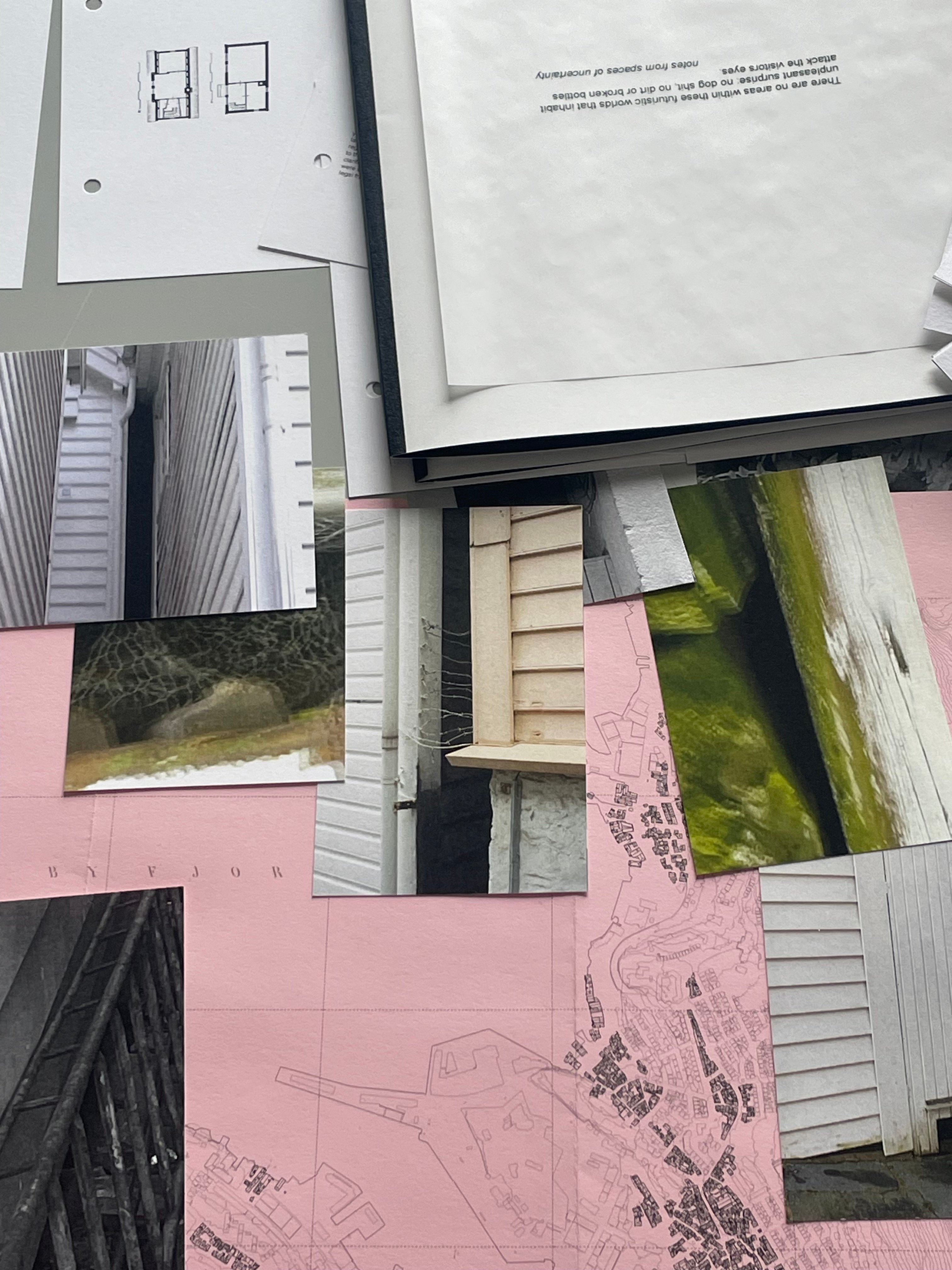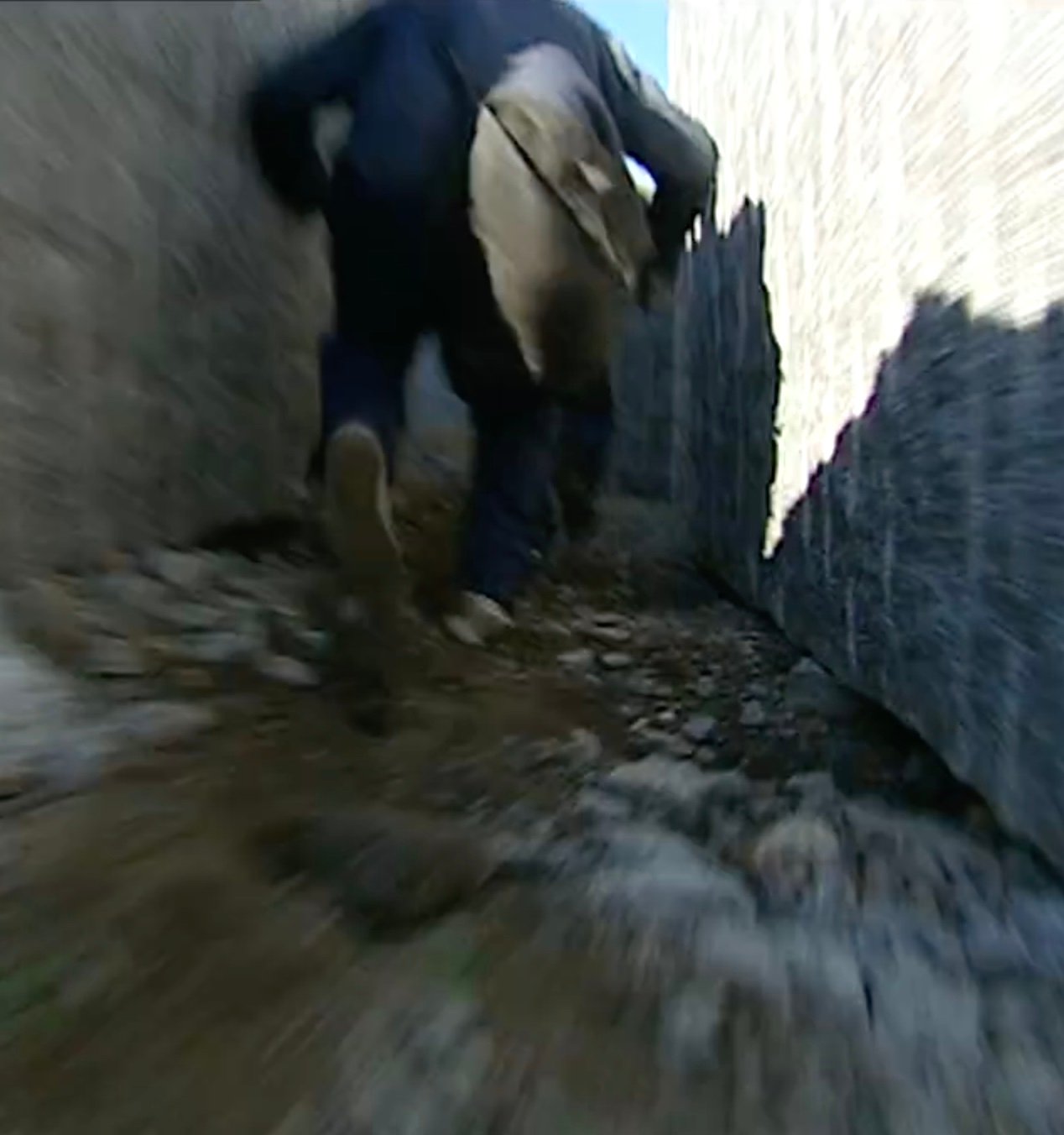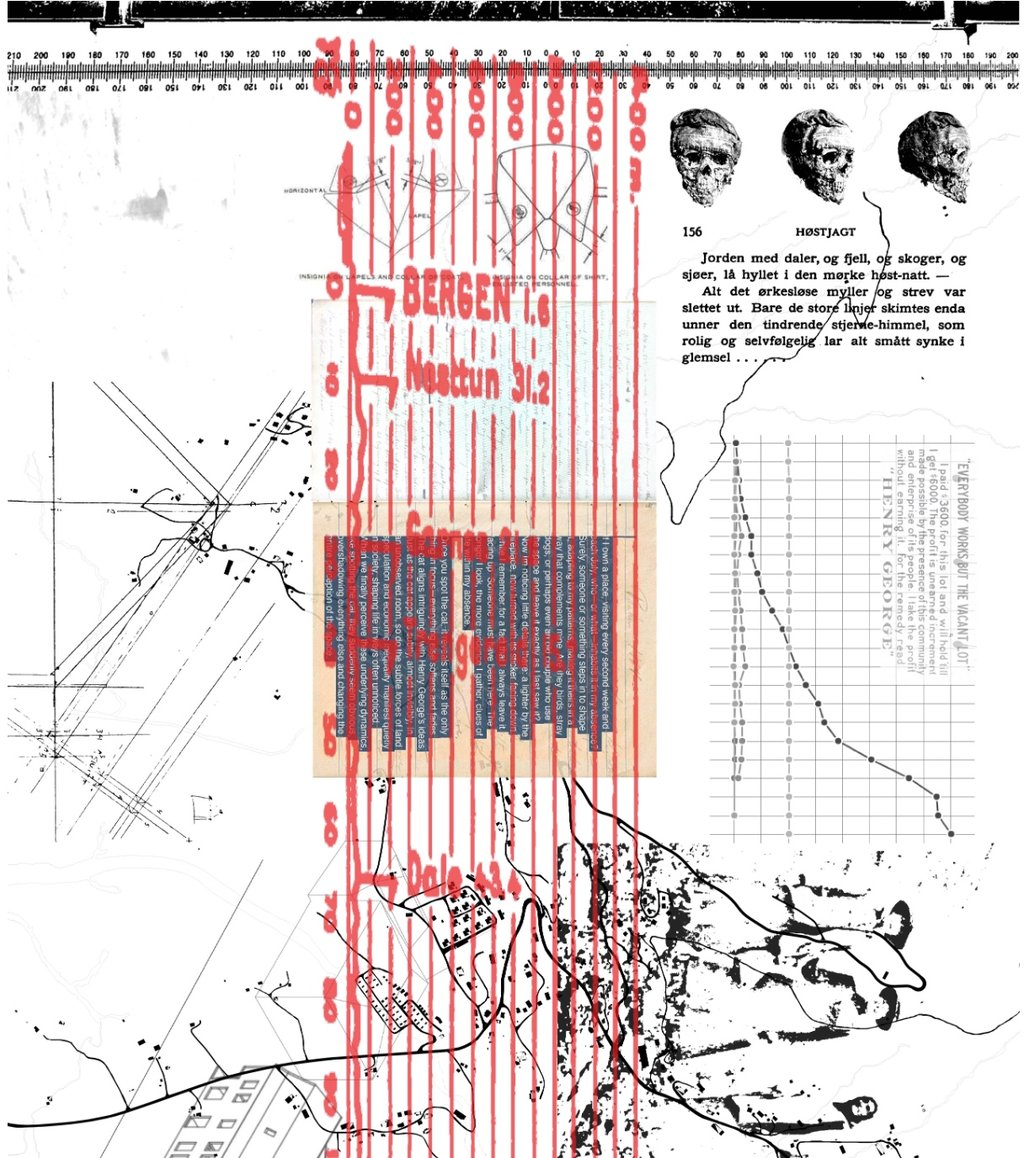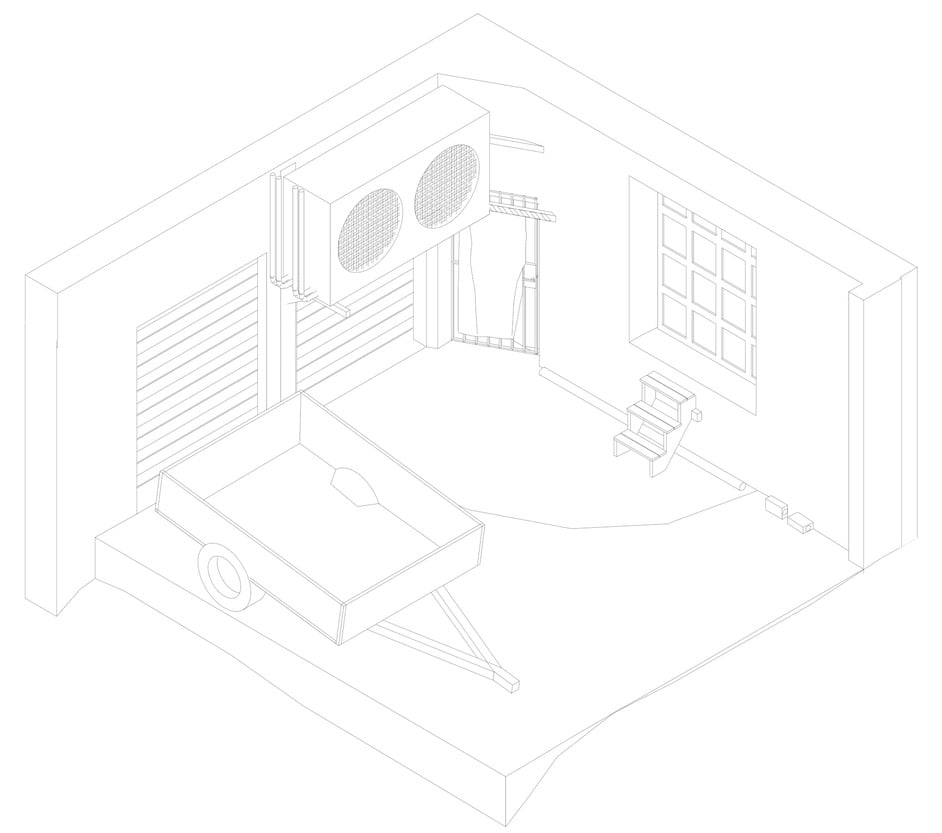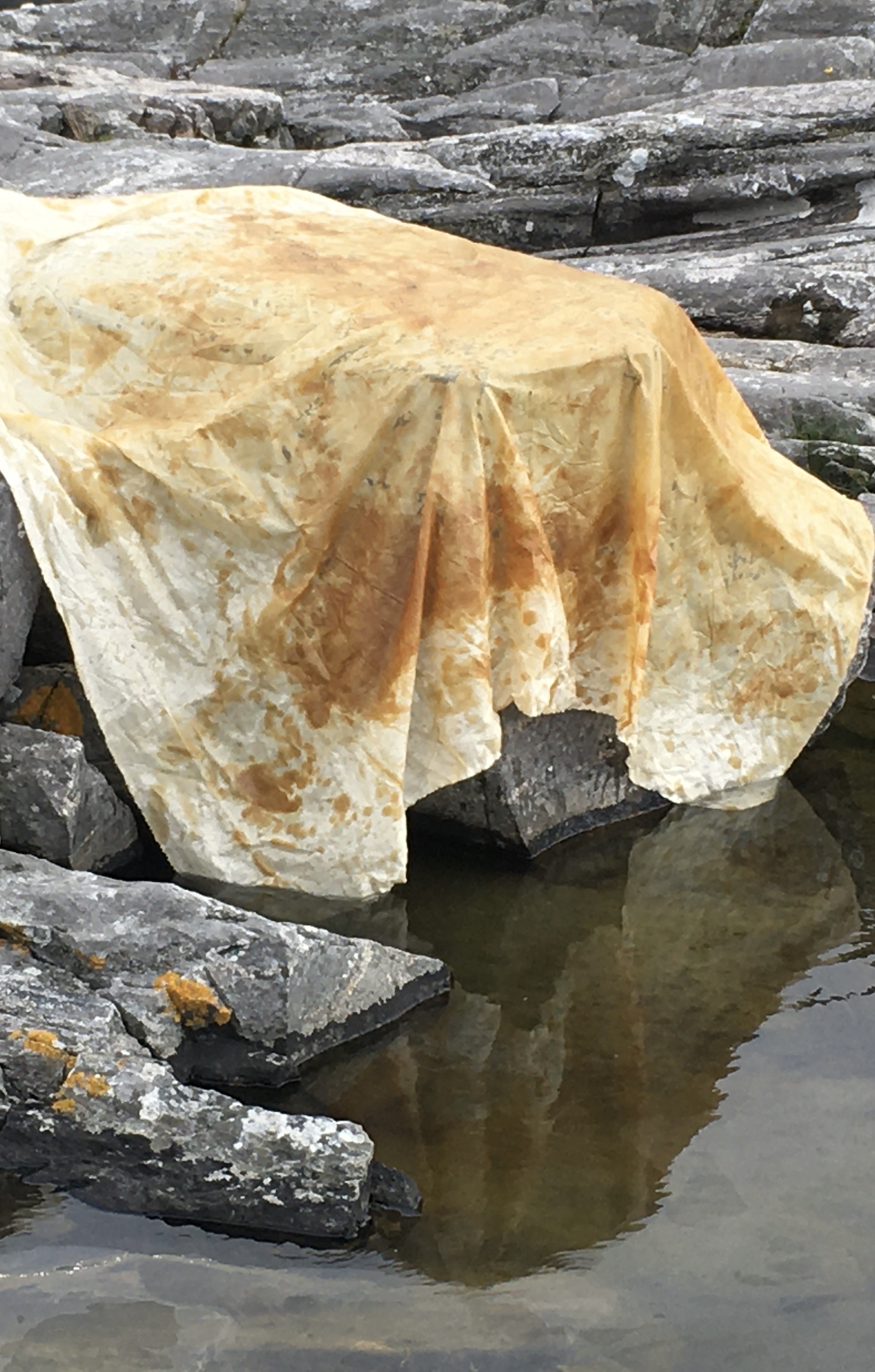interstices
Interstices




ESSAY, BENDIK STETTE 2025
From vinyl flooring designed to mimic wood to performances that subvert gender norms; from protests that reclaim public spaces to artists inviting us to share a meal in a gallery - appropriation is a tool of transformation. It is a method of taking something - a space, a resource, an identity - and reworking it, giving it new meaning or power. In doing so, it challenges established hierarchies and narratives. Who has the right to take? Under what conditions does appropriation empower, and when does it exploit? This essay explores appropriation across art, architecture, the construction industry, and social practices. By drawing on the theories of Henri Lefebvre, Judith Butler, Shulamith Firestone, and James Holston, along with the artistic practices of Rirkrit Tiravanija and Eline Benjaminsen, I aim to uncover both the common threads and the tensions inherent in appropriation. The goal is to identify its transformative potential while also addressing the ethical implications it carries. Ultimately, I propose a methodology, a practical framework for using appropriation as a tool for collective transformation of space. Through this exploration, I wish to understand how transformation navigates between disruption and creation, between power and resistance.
PHOTOGRAPHIC MAPPING, 2024-
Photographic mapping of a home over 24 hours. The apartment is documented from ceiling to floor in precise coordinates. Investigating improvised spatial structures and appropriated objects.
WAYS OF REPRESENTING INTERSTICES,2025-
Interstices are the small spaces between things. In this project, these are the small gaps between the urban wooden houses in Bergen. The term interstices is also used metaphorically to describe cracks in systems of power, thought, or structure. Places where resistance, ambiguity, or transformation can occur.
ONGOING RESEARCH ON MILITARY PRESENCE
From vinyl flooring designed to mimic wood to performances that subvert gender norms; from protests that reclaim public spaces to artists inviting us to share a meal in a gallery - appropriation is a tool of transformation. It is a method of taking something - a space, a resource, an identity - and reworking it, giving it new meaning or power. In doing so, it challenges established hierarchies and narratives. Who has the right to take? Under what conditions does appropriation empower, and when does it exploit? This essay explores appropriation across art, architecture, the construction industry, and social practices. By drawing on the theories of Henri Lefebvre, Judith Butler, Shulamith Firestone, and James Holston, along with the artistic practices of Rirkrit Tiravanija and Eline Benjaminsen, I aim to uncover both the common threads and the tensions inherent in appropriation. The goal is to identify its transformative potential while also addressing the ethical implications it carries. Ultimately, I propose a methodology, a practical framework for using appropriation as a tool for collective transformation of space. Through this exploration, I wish to understand how transformation navigates between disruption and creation, between power and resistance.
DRAWINGS, PHOTOGRAPHS 2024-
Odd situations, overgrown gardens, post industrial sites. I photograph them, pin them up in the studio and start drawing them as axonometric drawings. What they all have in common is that they are a kind of backside. They all contain stuff we dont want to associate ourself with. This became an entrance into the thinking of what we hide, and how we curate for the conformist living.
MATERIAL RESEARCH,2025
collective transformation of space. Through this exploration, I wish to understand how transformation navigates between disruption and creation, between power and resistance.
ARCHITECTURAL PROJECT
Icelandic documentary of Askja caldera volcanic activity in 1961.The Askja caldera had an effusive eruption from October 26 to December 5, 1961, which produced a basaltic lava flow known as Vikrahraun. The eruption was relatively small, lasting about a month and a half, and was characterized by lava flows rather than large ash plumes. The lava covered an area of approximately 15 square kilometers.

